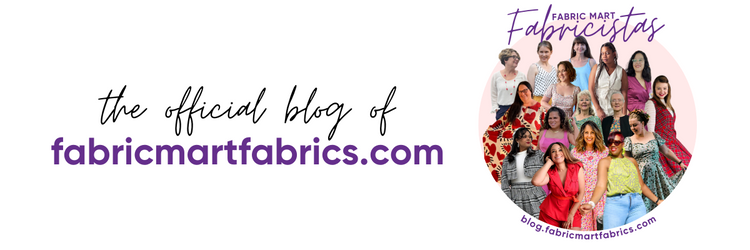On Monday when I introduced Step #1 - Cutting, Alterations and Thread, I mentioned about lengthening and shortening the bodice piece. Since then, the person that asked about this tried it out, using the directions from Handmade by Heather B, and it worked! So if you haven't cut out of your good fabric yet and need to do this step, give it a try!
Since we are working with knits, it is important to make sure you have a STRETCH NEEDLE. One thing I found when I was starting to sew with knits, was that my seams and hems would break because there was no give. Knits stretch with you, the thread does not. Some sewing machines have a knit stitch. (Check your manual for this info.) If your sewing machine doesn't, set your machine to a straight stitch, but modify your zig-zag stitch ever so slightly. (Or use the zig-zag, but on a very fine zig-zag, almost straight! This setting depends on your sewing machine.) I have a Bernina and it comes with a knit stitch. I don't care for it, so I use a straight stitch with a slight zig-zag.
Here is a photo of my settings:
I do tug slightly on a knit when I'm sewing with it, but not too much. You don't want fabric ripples!
So today we're going to make the pleats for the bodice. I'm not going to go through every step they tell you to do, because that would just be repetitive, but give you hints, reminders and suggestions that go along with the step.
When making your pleats you may fumble around with matching up your lines and sticking the pins into place. Starting from the end of the fabric, I pierce the pin through the line and then through the line on the other side of the fabric. This ensures that you've got one section all lined up. Then go back into the line with the pin and match up the line again.
When sewing your pleats, be sure to keep the other pleats out of the way! You don't want to sew them all together!
Listen to the directions with they say press and baste your pleats up or down! It definitely helps the dress look great in the finished product!
That's all for today! This step was easy. The next couple of steps get more complicated.
Share your fabric choices on our Flickr page! Some of you have shown us what you are using and we'd love to see more!
Any questions or suggestions? Comment below.







Thanks for the great info. :) I want to add that I definitely stabilized the neckline bit, too, so that it wouldn't stretch out of shape when sewing it up. My muslin is far from perfect, but that darn neckline looked great. I *think* I may have used stay tape...
ReplyDeleteWhen is the next part of the sew along set to go? I want to make sure I stay in step with you all and don't get behind. I have a few projects over the next few weeks, so I have to prioritize my sewing tasks.
Hi Dina, the next step will be posted on Friday. You will have all weekend to work on that. And for people catching up, they have the weekend to do also!
DeleteNo wait, the neckline has stretch, so I must have used some kind of knit stabilizer. Will check my notes and dress muslin a bit further to see what I did to stabilize the neckline...
ReplyDeleteOkay, last comment, I promise. I just checked the neckline, and it appears I didn't use a stay tape or stabilizer of any kind. Sigh. What I think I did was staystitch the dress neckline to prevent stretching, but then used the "lightning bolt" stitch on my Bernina to get stretch on the finished bit of the neckline.
ReplyDeleteI only remember this part so clearly because so many reviews of this pattern mention making sure to not stretch out the neckline or else it will gape. And that is the last thing I wanted from my finished product.
I did notice the neckline comment brought up a lot in other reviews of this pattern. We will talk about this in the next step, which will be posted on friday!
DeleteHow do you feel about using clear elastic on the shoulder seams instead of stabilizer? I've used it and like it, but are there times stabilizer would be preferable?
ReplyDeleteThanx!
Hi Sharon,
DeleteI think that clear elastic would be fine, as long as you don't pull on it to the point of puckering your seam. If you are comfortable with it, I would say go for it! The thing I liked about the seam tape I used was that it did not stretch, therefore I didn't have to worry that it would pucker.
That makes sense. Thanks for the reply!
Delete